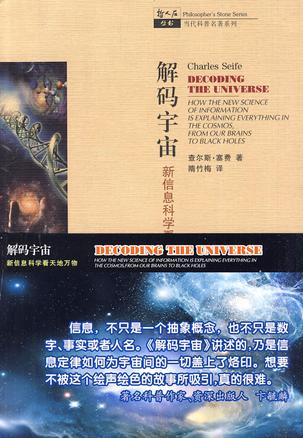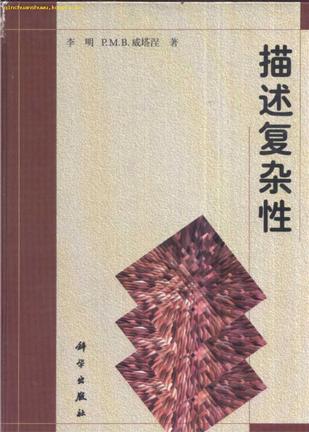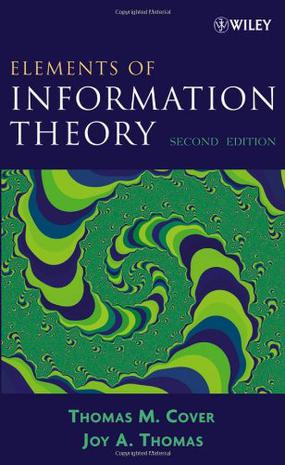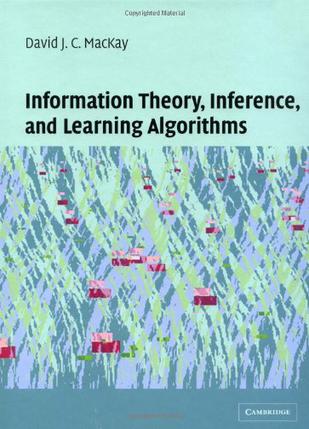-

解码宇宙
《解码宇宙:新信息科学看天地万物》:宇宙,或许就是一台庞大的计算机。这是查尔斯·塞费在《解码宇宙:新信息科学看天地万物》中对宇宙做出的结论。作者从信息的特点开始谈起,详细论述了信息论和量子计算,向我们展示了一种不可思议的拜占庭式宇宙的情景,涉及生命的本质、热力学、相对论、量子力学、黑洞、多重宇宙,直至宇宙的命运。《解码宇宙:新信息科学看天地万物》资料翔实,内容丰富多彩,思路清晰,观点明确,读后使人对宇宙肃然起敬。对物理学感兴趣的读者,不妨展卷一读。 -

信息论
《信息论:基础理论与应用》(第2版)系统地论述了香农信息论基本理论及某些应用问题,基本覆盖了信息论的各个方面的内容。内容包括:信息的定义和度量;各类离散信源和连续信源的信息熵;有记忆,无记忆,离散和连续信道的信道容量;香农信息论的三个基本定理:无失真数据压缩(即无失真信源编码)的实用编码算法与方法,以及信道纠错编码的基本内容和分析方法。《信息论:基础理论与应用》(第2版)最后还简要地介绍了信息论与热力学,光学,统计学,生物学,和医学等其他学科交叉结合的应用内容。 -

Information Theory and Reliable Communication
-

描述复杂性
李明和Vitanyi的早期著作,描述复杂性入门的经典书。难能可贵的是,复旦大学的程岐把这本书翻译成了中文。 -

Elements of Information Theory
The latest edition of this classic is updated with new problem sets and material The Second Edition of this fundamental textbook maintains the book's tradition of clear, thought-provoking instruction. Readers are provided once again with an instructive mix of mathematics, physics, statistics, and information theory. All the essential topics in information theory are covered in detail, including entropy, data compression, channel capacity, rate distortion, network information theory, and hypothesis testing. The authors provide readers with a solid understanding of the underlying theory and applications. Problem sets and a telegraphic summary at the end of each chapter further assist readers. The historical notes that follow each chapter recap the main points. The Second Edition features: * Chapters reorganized to improve teaching * 200 new problems * New material on source coding, portfolio theory, and feedback capacity * Updated references Now current and enhanced, the Second Edition of Elements of Information Theory remains the ideal textbook for upper-level undergraduate and graduate courses in electrical engineering, statistics, and telecommunications. An Instructor's Manual presenting detailed solutions to all the problems in the book is available from the Wiley editorial department. -

Information Theory, Inference and Learning Algorithms
Information theory and inference, taught together in this exciting textbook, lie at the heart of many important areas of modern technology - communication, signal processing, data mining, machine learning, pattern recognition, computational neuroscience, bioinformatics and cryptography. The book introduces theory in tandem with applications. Information theory is taught alongside practical communication systems such as arithmetic coding for data compression and sparse-graph codes for error-correction. Inference techniques, including message-passing algorithms, Monte Carlo methods and variational approximations, are developed alongside applications to clustering, convolutional codes, independent component analysis, and neural networks. Uniquely, the book covers state-of-the-art error-correcting codes, including low-density-parity-check codes, turbo codes, and digital fountain codes - the twenty-first-century standards for satellite communications, disk drives, and data broadcast. Richly illustrated, filled with worked examples and over 400 exercises, some with detailed solutions, the book is ideal for self-learning, and for undergraduate or graduate courses. It also provides an unparalleled entry point for professionals in areas as diverse as computational biology, financial engineering and machine learning.